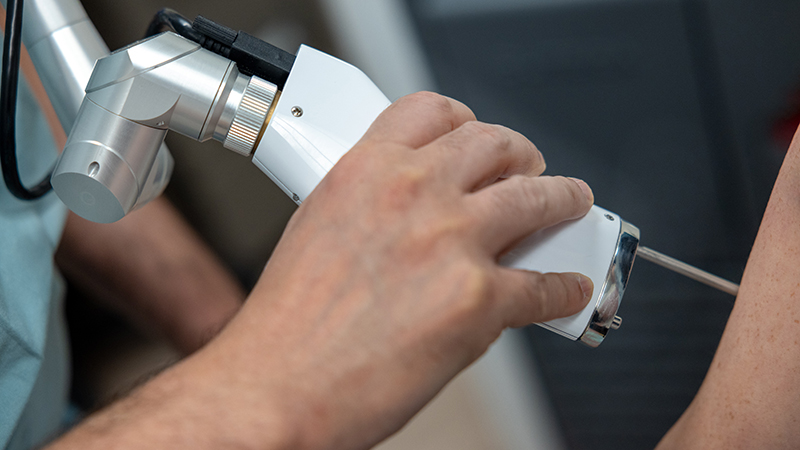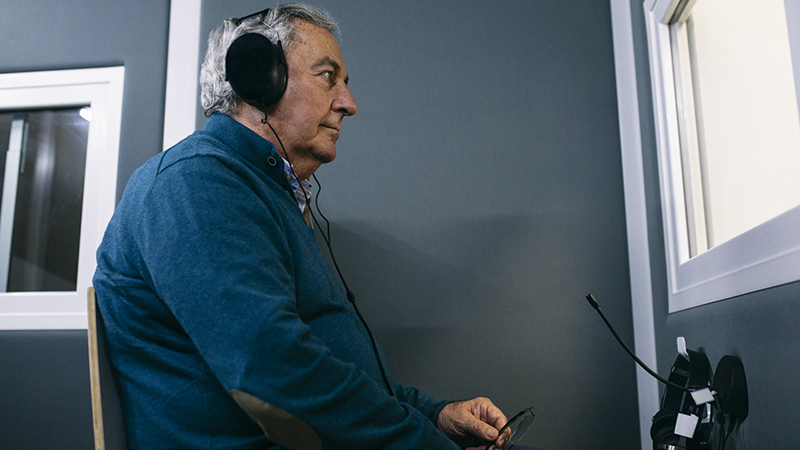Is Restless Legs Syndrome Ruining Your Sleep?
There is hope and help.
Published March 2023
- Do you have difficulty falling asleep because you have an urge to move your legs?
- Do you wake up at night because you feel like your legs are on fire?
- Do you feel an aching or itching sensation in your legs when you lie down to go to sleep?
- Do your legs seem to feel better when you walk, stretch or make other movements?
RLS is a real disorder, and yes, it can be treated.— Roneil G. Malkani, MD
If you answered yes to any of these questions, you may have restless legs syndrome (RLS), a condition that affects about 30 million people in the U.S. and one that is often ignored. The good news: There is hope and help for those with RLS.
“Some people don't realize this is real and treatable condition, and some physicians may not be familiar with it or feel comfortable treating it,” says Roneil G. Malkani, MD, a movement disorders and sleep medicine specialist at Northwestern Medicine. “As a result, RLS may be under-recognized and under-diagnosed. But RLS is a real disorder with a distinct disease physiology, and yes, RLS can be treated.”
What is RLS?
Also known as Willis-Ekbom disease, RLS is a disorder that involves an uncomfortable sensation in the legs, such as tingling, burning or aching. The sensation typically improves with movement and worsens when your legs are not moving.
Who gets RLS?
Anyone can develop this syndrome. Most people develop RLS after age 45, and women are nearly twice as likely to get it as men*.
If you have a family member with RLS, you are three to six times more likely to develop symptoms before you’re 45. More than half of people with RLS have a family history of the disorder.
What are the symptoms of RLS?
The primary symptom of RLS is a feeling of discomfort in your legs that may be hard to describe. It’s a different feeling than leg cramps or numbness from circulation problems; it is often associated with a strong urge to move your legs. The symptoms of RLS include:
- Discomfort in the legs that may be described as aching, burning, tingling or itching
- A strong urge to move your legs, which relieves the discomfort
- Discomfort that gets worse when your legs are resting
- Evening onset of symptoms
- Sleeplessness or insomnia associated with the discomfort
- Daytime sleepiness
Left untreated, Dr. Malkani says, symptoms of RLS may worsen over time and keep disrupting your sleep and quality of life.
To make a diagnosis, your physician will ask about your medical history and if you are on any medications. They may order blood tests, including measuring your iron levels. Be sure to tell your physician if you or a relative has had RLS or a sleep disorder. In some cases, they may recommend a sleep study.
What causes RLS?
The cause of RLS vary. In some cases, the cause is unknown, and in some cases, the disorder may be related to or made worse by other health issues or medications, such as iron deficiency in your brain. “Low iron levels in the blood or poorly metabolized iron can lead to low iron levels in the brain,” says Dr. Malkani. Even people with healthy blood iron levels can have low iron levels in their brain, Dr. Malkani explains.
If you think your RLS caused by low iron, talk with your physician. They will perform testing and help you make an effective treatment plan. Do not attempt to take iron supplements on your own as too much iron can be harmful to your liver.
Other possible causes and conditions of RLS include:
- Chronic kidney disease, which can cause iron deficiency
- Changes in dopamine levels in the brain
- Pregnancy, which also can cause low iron levels or affect dopamine levels in the brain; RLS symptoms usually resolve within a month of giving birth
- Some medications, including those used to treat allergies, depression, insomnia, acid reflux and nausea
- Peripheral neuropathy, which may be confused with RLS because of similar symptoms, but tends to be more constant and do not improve with movement
- Diabetes, which can damage blood vessels and nerves in the legs and lead to peripheral neuropathy
How is RLS treated?
Treatment depends on the cause of RLS, and it may include lifestyle changes, non-medication therapies, iron supplements or other medications to treat the underlying condition.
Lifestyle changes that can help RLS include:
- Exercise: Regular exercise, such as walking or riding an exercise bike, may relieve RLS symptoms. Exercising too much or at too great of an intensity can actually increase symptoms.
- Stress reduction techniques: Stress can aggravate RLS. Relaxation activities such as yoga, meditation or other techniques can help address your symptoms. This approach is especially helpful before bed.
- Quit smoking, and drink less caffeine and alcohol: These can worsen the symptoms of RLS. By avoiding these substances, you may be able to reduce your symptoms.
- Massage your legs or soak in a hot bath: Both of these can help relax your muscles and alleviate the symptoms of RLS.
There are several medications that can help treat RLS, including iron supplements, anti-nerve-pain medications, dopamine agonists (medication that activates dopamine) and other pain medications. If lifestyle changes don’t help, your physician will discuss other treatment options with you.
*Scientists do not always collect information from participants about gender identity. To avoid misrepresenting the results of this research, we use the same terminology as the study authors.






